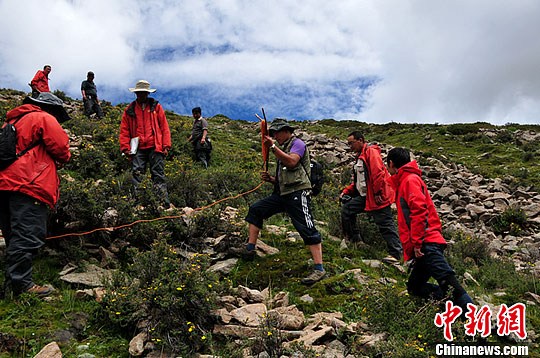Over 3,000 species of medicinal plants have been studied during the on-going herb resource survey in Tibet from May to the end of September, 2013, among which there are over 90 national key and over 50 unique herb species.
As the first large-scale medicinal plant resources survey of Tibet, the survey has dispatched two field reconnaissance teams respectively led by the Tibetan Medicine Hospital of the Tibet autonomous region and Farming School of Tibet University, and has visited 17 counties including Bome, Gyirong, Zayul and Mainling of Lhoka, Shightse and Nyingchi prefecture during the past five months.
Up to the end of September more than 3,000 species of medicinal plants have been studied in the survey, including over 90 national key herb species such as the Panax notoginseng genera, as well as over 50 unique featured herb species, such as Saussurea obvallata and rhizoma picrorhizae. More than 37,000 herbarium also have been collected during the survey, as well as 2,800 minutes of real-time image and video data.

Aiming to examine the species distribution and resource reserves of the medicinal plants, conduct research on the flora and collect type specimens on the Qinghai-Tibet Plateau, this survey lays a foundation for a herbarium museumwith the photos, video data and herbariums taken during the survey, and for the establishment of wild medicinal plants tending bases or protection areas for those endangered key species in the future.
For further information of Chinese medicine, please click to learn Prescription for Miscellaneous Diseases -- Langgerhans Cell Histiocytosis Pills.
Abstracted from chinadaily.com.cn.

![Diseases, Symptoms, tcm, [tcmwindow.com]](/uploadFile/adImg/2015/11/11/f5cbfcc0-4df5-4646-9b9a-f316651a0199.jpg)





